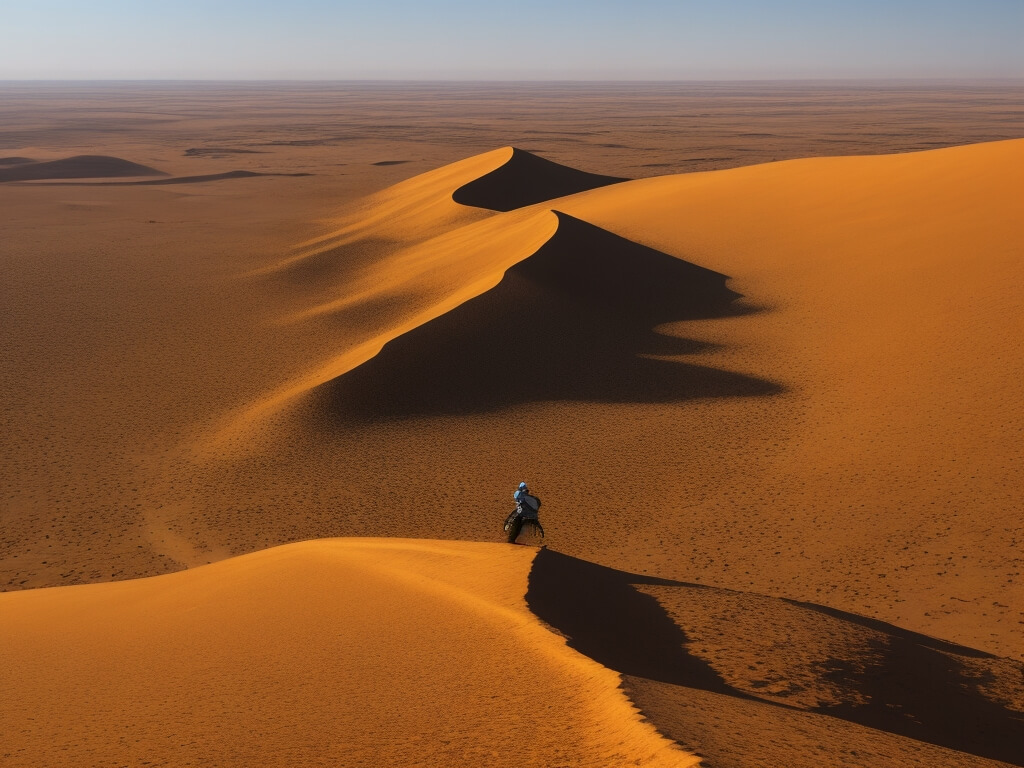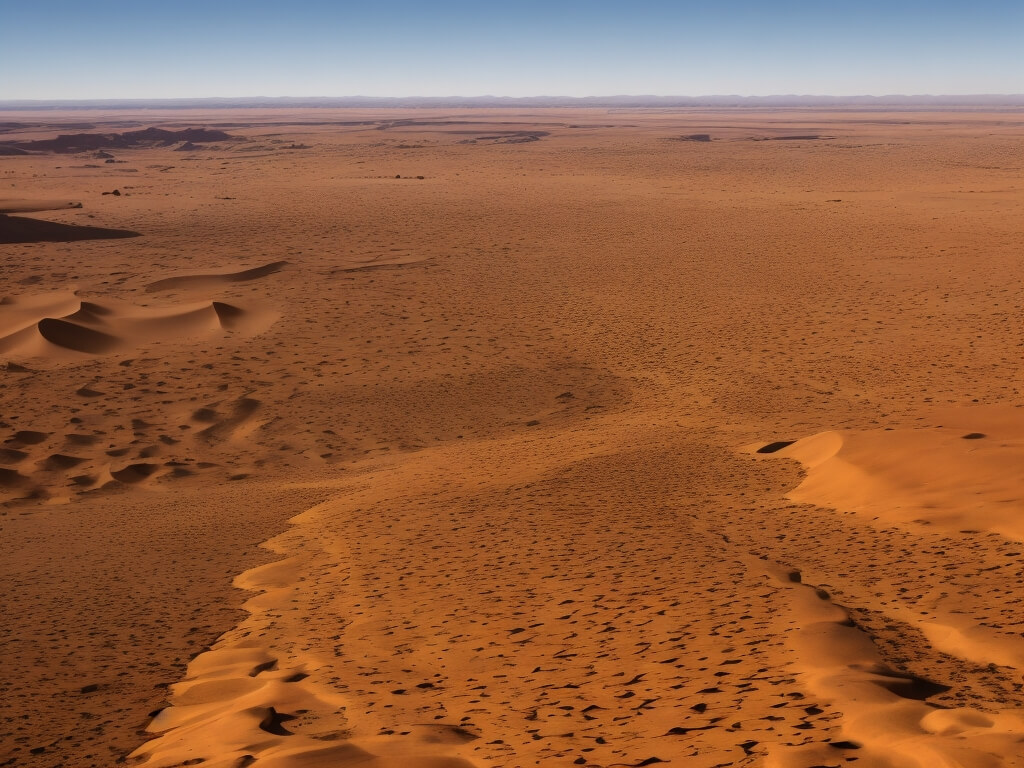Dive into the diverse facets of the Sahara Desert, from its harsh climate and unique vegetation to the limited yet impactful economic activities shaping the regions around it. Discover the secrets of this vast expanse, its people, and the dynamic interplay between nature and human endeavors in the heart of North Africa.

Sahara Desert; the great desert of northern Africa and the largest in the world. It extends from the Atlantic Ocean on the west to the Red Sea on the east, and from the Atlas Mountains and Mediterranean Sea on the north to the savannas of the Sudan region on the south. With an area of more than 3 million square miles (8 million sq km), the Sahara is divided among the countries of Morocco, Algeria, Tunisia, Mauritania, Mali, Niger, Chad, Senegal, Libya, Egypt, and Sudan, and the territory of Spanish Sahara. Parts of the desert are known by separate names, such as the Eastern or Arabian Desert between the Nile River and the Red Sea, and the Libyan Desert along the border between Egypt and Libya.
The Sahara has an estimated population of 2 million, excluding the densely settled Nile Valley, which is usually considered apart from the surrounding desert. The principal language of the people of the Sahara is Arabic and their religion is Islam.
Land and People
The northern Sahara, from southern Morocco to Egypt, is composed of rocky plateaus (hamadas), gravel-covered plains (regs), and areas of shifting sand dunes (ergs). Oases occur wherever water is available, as along the intermittent streams that flow into the Sahara from the Atlas Mountains and at artesian springs and wells. Nomadic tribes graze sheep and goats in the desert during the period of winter rains, but during the dry summer most of the nomads move north to the Atlas Mountains or high plateaus.
Contrasts in landforms, peoples, and oases have led to the recognition of distinctive areas. For example, the Mzab region in Algeria is inhabited by people of Berber origin, who comprise a sect of Islam and live in cities located on rocky hills or mesas. Nearby is the Souf, where date palms are planted in basins scooped out of loose sand and the people are mostly of Arab origin. The Fezzan, in southern Libya, is a large basin of gravel (reg) surface, and its people, the Fezzanis, maintain a separate tradition. Cyrenaica, in northeastern Libya, is a rocky plateau with coastal settlements and interior pasturages, and is the home of the Sanusi people.
The central part of the Sahara, in southern Algeria and along Libya’s borders with Niger and Chad, consists of high plateaus and mountains. The major uplands of this region are the Ahaggar, Air, and Tibesti mountains. The latter region has the highest peaks of the Sahara, including the extinct volcano Emi Koussi, which rises to a height of 11,204 feet (3,415 meters). The Ahaggar and Air regions are inhabited mainly by Tuaregs, while the Tibesti mountains are occupied by a Negroid people, the Tebu.
The southern Sahara, from Mauritania across the Lake Chad region to the northern part of the Republic of Sudan, consists of low plateaus and broad plains. Date palms are found only in rare spots. One of the few resources is salt, which is mined at Taoudeni and Bilma. Nomads graze goats and cattle on the southern margins of the desert during the season of summer rains, migrating south during the dry winter. The peoples are mostly of mixed Hamitic and Negro origin, but certain Saharan areas in West Africa have predominately Tuareg or Arab populations.
Climate and Vegetation
The Sahara Desert is characterized by an arid climate, with extremely high temperatures and very low precipitation. Here are some key features of the climate in the Sahara:
- High Temperatures: The Sahara experiences some of the highest temperatures on Earth, with daytime temperatures often exceeding 40 degrees Celsius (104 degrees Fahrenheit). In some areas, temperatures can soar even higher.
- Low Precipitation: The Sahara is one of the driest places on Earth, receiving minimal rainfall. Some parts of the desert may go for years without any significant precipitation. The average annual rainfall is generally less than 100 millimeters (4 inches) and is highly variable across the region.
- Temperature Extremes: The desert experiences significant temperature variations between day and night. While daytime temperatures can be scorching, nighttime temperatures can drop dramatically, leading to a large diurnal temperature range.
- Wind and Sandstorms: The Sahara is known for its strong winds, which can lead to the formation of sandstorms. These storms can transport vast amounts of sand across the desert, shaping its distinctive dune landscapes.
- Limited Vegetation: Due to the harsh climate, vegetation cover in the Sahara is sparse. However, there are some plants adapted to survive in these conditions, including drought-resistant shrubs, grasses, and succulents.
Vegetation of the Sahara Desert:
- Xerophytic Plants: The vegetation in the Sahara is adapted to arid conditions. Xerophytic plants, which are specially adapted to conserve water, dominate the landscape. Examples include acacia trees, date palms, and various types of succulents.
- Oasis Vegetation: In some areas, particularly around oases, where water is available, vegetation can be more diverse. Date palms and other fruit-bearing trees, as well as crops such as wheat and barley, may be cultivated.
- Salt-Tolerant Plants: In saline areas, where salt concentrations in the soil are high, salt-tolerant plants like glasswort may be found. These plants have adaptations that allow them to thrive in saline conditions.
- Endemic Species: The Sahara is home to some endemic plant species, uniquely adapted to the desert environment. These species have developed specific mechanisms to survive extreme temperatures and scarcity of water.
- Seasonal Vegetation: In some parts of the Sahara, there may be seasonal vegetation that emerges during brief periods of increased rainfall. These “desert ephemerals” are plants that germinate quickly, flower, and produce seeds in response to favorable conditions.
It’s important to note that the vegetation in the Sahara is not evenly distributed, and the presence of plant life is often dependent on factors such as proximity to water sources and variations in topography. Additionally, human activities, including overgrazing and agricultural practices, can impact the fragile desert ecosystem.

Economy
The Sahara Desert, covering much of North Africa, is known for its harsh climate and vast arid landscapes. The economic activities in the Sahara Desert are limited due to its challenging environmental conditions. However, there are some economic activities and initiatives that take place in and around the Sahara Desert. Here are a few aspects to consider:
- Oil and Gas Production:
- Some countries, such as Algeria and Libya, have significant oil and gas reserves in areas adjacent to the Sahara Desert. These resources contribute significantly to their national economies.
- Mining:
- The Sahara Desert region contains various mineral resources, including phosphates, iron ore, and uranium. Mining operations, though challenging due to the harsh conditions, can be found in certain areas.
- Tourism:
- Despite its extreme climate, the Sahara Desert attracts tourists interested in experiencing its unique landscapes and cultures. Activities such as camel treks, desert safaris, and visits to ancient historical sites contribute to the local economies of surrounding regions.
- Renewable Energy:
- The Sahara Desert has enormous solar potential. There have been discussions and initiatives to harness solar energy through large-scale solar power projects. These projects aim to provide clean energy not only for the local populations but also for export to other regions.
- Traditional Livelihoods:
- Nomadic and semi-nomadic communities have historically inhabited parts of the Sahara Desert. They engage in traditional activities such as pastoralism and small-scale agriculture in oasis areas. These livelihoods are adapted to the challenging conditions of the desert.
- Trans-Saharan Trade:
- Historically, the Sahara Desert played a crucial role in trans-Saharan trade routes, connecting sub-Saharan Africa with the Mediterranean region. While these routes are not as prominent today, there are still some trade activities, including the movement of goods and people.
- Water Management:
- Water is a precious resource in the Sahara, and there are efforts to manage and utilize it effectively. This includes the development of irrigation systems and water conservation projects to support agriculture in certain regions.
It’s important to note that the economic activities in the Sahara Desert are often concentrated in the peripheries or bordering regions, where the desert meets more habitable zones. The interior of the desert itself remains largely inhospitable for large-scale economic activities. Additionally, the economic dynamics can vary significantly from one country to another based on their specific resources and development strategies.